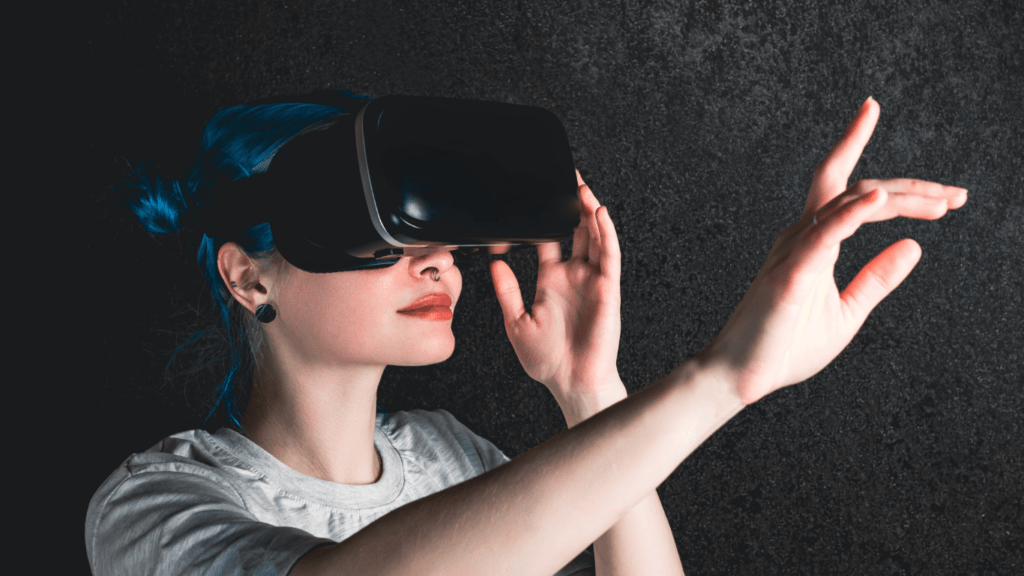Defining the Metaverse: An Overview
Historical Development of Virtual Worlds
Virtual worlds have evolved significantly since the early 1990s.
Initial platforms like “Habitat” laid the groundwork for multiplayer involvement. “Second Life,” launched in 2003 by Linden Lab, marked a significant shift by allowing users to create and monetize virtual assets.
The rise of Massive Multiplayer Online (MMO) games like “World of Warcraft” in 2004 further expanded the scope, amassing millions of users.
These developments set the stage for today’s metaverse, where social interaction, entertainment, and commerce intersect.
Components and Technology of the Metaverse
The metaverse integrates several key components and technologies:
- Virtual Reality (VR) and Augmented Reality (AR): VR provides immersive experiences through fully virtual environments, while AR overlays digital elements onto the real world. Headsets like Oculus Rift and devices like Microsoft HoloLens exemplify these technologies.
- Blockchain: Ensures secure, decentralized transactions and ownership. Cryptocurrencies and Non-Fungible Tokens (NFTs) enable buying, selling, and trading of virtual assets.
- Artificial Intelligence (AI): Enhances user interactions and automates processes. AI-driven avatars and environments improve engagement and realism.
- 5G and Edge Computing: Ensure low latency and high-speed connections, which are critical for real-time interactions in the metaverse.
These technologies combine to create a seamless, interactive digital universe that extends beyond gaming to include social interaction, education, and business.
The Evolution of the Metaverse: Key Milestones
From Gaming to Social Spaces
The metaverse initially emerged in the 1980s with text-based games like “MUD” (Multi-User Dungeon). These early interactive environments allowed players to engage with virtual worlds in real-time.
The transition to graphical interfaces in the 1990s marked a significant milestone. “Habitat”, developed by Lucasfilm, was among the first to offer a graphical virtual world for users to interact within.
In the early 2000s, platforms such as “Second Life” further evolved the metaverse by enabling users to create, socialize, and trade within a digital space.
Unlike previous virtual worlds focused solely on gaming, “Second Life” introduced a broader scope, blending social interaction and economic activities.
Users could design avatars, build virtual properties, and engage in virtual commerce, representing a substantial shift from purely gaming environments to multifaceted social spaces.
Virtual Reality and Augmented Reality Contributions
- Virtual Reality (VR) and Augmented Reality (AR) have significantly contributed to the metaverse’s development.
- VR technology, which immerses users in completely digital environments, has enhanced the realism and interactivity of virtual worlds.
Early VR systems in the 1990s, like the “Virtuality” gaming platform, laid the foundation for modern VR experiences. - Devices like the Oculus Rift and HTC Vive exemplify this technology’s evolution, offering high-resolution displays and precise motion tracking.
- AR, which overlays digital information onto the real world, has expanded the metaverse’s applicability beyond purely virtual environments.
- The release of “Pokémon GO” in 2016 popularized AR, demonstrating its potential for integrating virtual elements into everyday life.
- AR glasses like Microsoft’s HoloLens and Apple’s ARKit development platform have further established AR as a vital component of the metaverse, merging digital and physical realities seamlessly.
- These technological advancements in VR and AR have transformed the metaverse, making it more immersive and interactive.
Users can now explore richly detailed virtual worlds and interact with digital objects in their physical surroundings, enhancing the overall metaverse experience.
Real-Life Applications of the Metaverse

Education and Learning Environments
The metaverse is transforming education, creating immersive, interactive learning environments. Virtual classrooms provide students with access to resources and experiences beyond physical limitations.
For example, a history class might explore ancient civilizations through virtual reality tours of archaeological sites.
This technology supports remote learning by bringing together students from diverse locations in a shared, interactive space.
The metaverse also facilitates collaborative projects and simulations, enhancing both engagement and retention.
Business and Workforce Transformation
Businesses leverage the metaverse to revolutionize workforce engagement and operations.
Virtual offices enable remote teams to collaborate in real-time, reducing the need for physical presence.
For instance, a virtual corporate training session can simulate real-world scenarios, allowing employees to develop skills in a controlled, risk-free environment.
The metaverse also supports virtual trade shows and conferences, broadening participation and minimizing logistical constraints.
Virtual storefronts provide a new avenue for e-commerce, enabling customers to interact with products in a 3D space.
Healthcare Advancements Through Virtual Technologies
- Healthcare is experiencing significant advancements through metaverse applications.
- Virtual reality simulations assist in medical training by providing realistic, hands-on experience without patient risk.
- Surgeons use these simulations to practice complex procedures, improving precision and outcomes.
- Telemedicine platforms within the metaverse offer virtual consultations, enabling doctors to interact with patients remotely, enhancing accessibility and convenience.
- Rehabilitation programs leverage immersive environments to engage patients in physical therapy, improving recovery outcomes through interactive, motivating exercises.
Social and Ethical Considerations
Privacy and Security in Virtual Environments
Data protection in the metaverse demands robust measures.
Users share personal information extensively, creating a need for stringent privacy protocols. Security breaches in virtual spaces can expose sensitive data, leading to significant consequences.
Implementing strong encryption, multi-factor authentication, and regular security audits can mitigate risks.
Companies must also establish transparent data practices to maintain user trust.
Socioeconomic Impacts and Accessibility
Economic disparities affect metaverse participation. High costs of VR equipment and high-speed internet limit access for low-income groups.
Developing affordable technologies and ensuring widespread internet availability can bridge this gap.
Additionally, the metaverse presents opportunities for economic growth.
Virtual marketplaces enable new business models and job creation. However, equitable access remains essential to prevent a digital divide.
Education can benefit from accessible metaverse platforms.
Virtual classrooms offer immersive learning but require affordable access for all students. Addressing these socioeconomic challenges ensures inclusive benefits from metaverse advancements.

